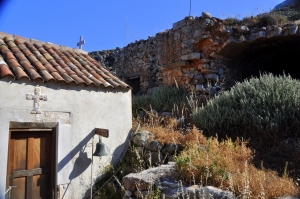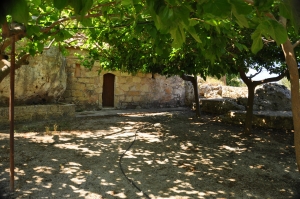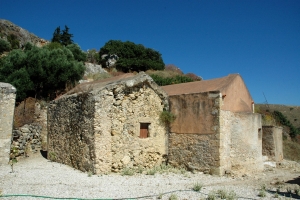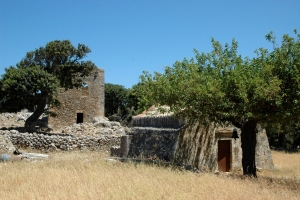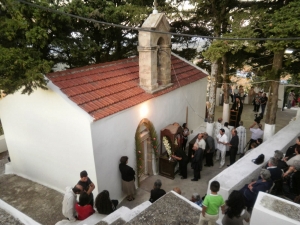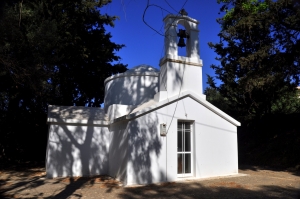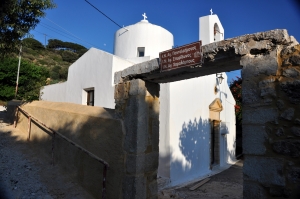At one of the most remote spots of Crete, the peninsula of Gramvousa, operated the small monastery of St. John, which is dedicated to the decapitation of John the Baptist.
On the main road leading from the village Ravdoucha to the beach, we meet the Byzantine church of Agia Marina with spectacular sea views, built in a rock recess. The church bears frescoes that have suffered considerable damage. As in many churches of the peninsula Rodopou, so here too we see engravings of the travelers of the era.
When the Mediterranean suffered from the raids of the pirates, the monks of the seaside monastery of Saint George at Menies decided to migrate to a more secure location. Thus they chose the site where we meet today the scenic cemeterial church of the Monastery of Gonia Odigitrias, dedicated to St. George (14th century).
The very old monastery of St. George was built in the 9th century but it was abandoned several centuries later, because of the constant raids of pirates. A Byzantine tower was built next to the building complex. It was built by the monks of the monastery so as to control the sea and pirates.
The uninhabited Gra Kera monastery by Deliana is dedicated to the birth of Virgin Mary (Panagia). The name comes after Iera Kera i.e. Holy Lady. The monastery in 1632 became a dependency of the larger monastery of Gonia Odigitria at Kolimbari as mentioned in a document, so it was already operating.
At this point, in a wooded setting, operated a monastery dedicated to the Holy Cross. Today the monastery is not operating. The icons in the temple date back from 1886 (painter Papadakis from Rodopou) and the iconostasis from 1883.
The temple of the Panagia at Zachariana is dedicated to Virgin Mary and dates back from the 10th-11th century. It has a very special architecture, with a free cross with a dome. There are some frescoes surviving in poor condition.
The church of Saint Panteleimon by Nopigia is a cruciform church of the 14-15th century and is one of the largest pilgrimages in the area of Kissamos. It is dedicated to St. Panteleimon, St Spyridon and St Charalambos.











